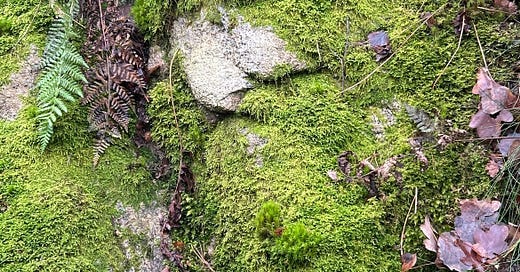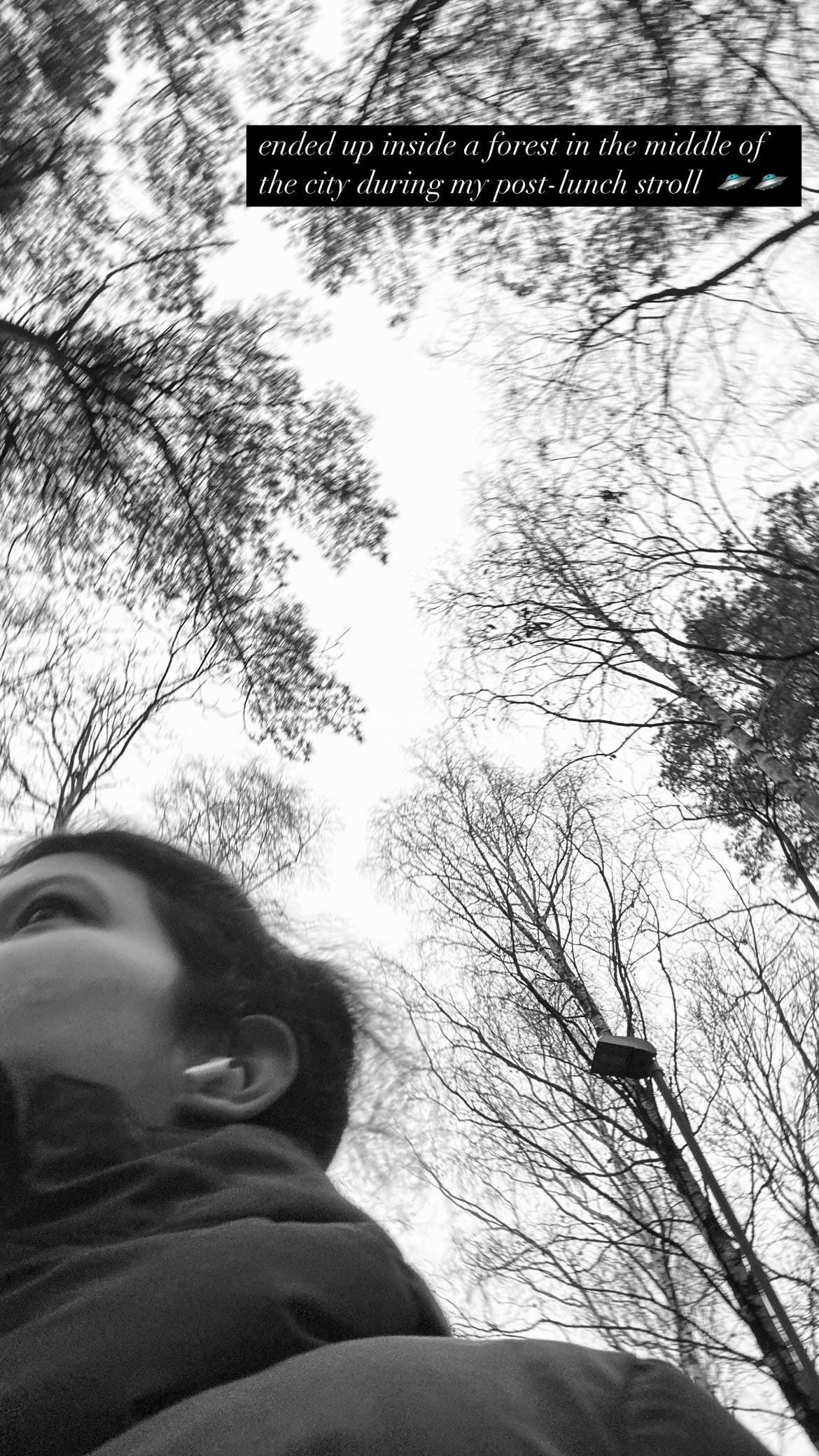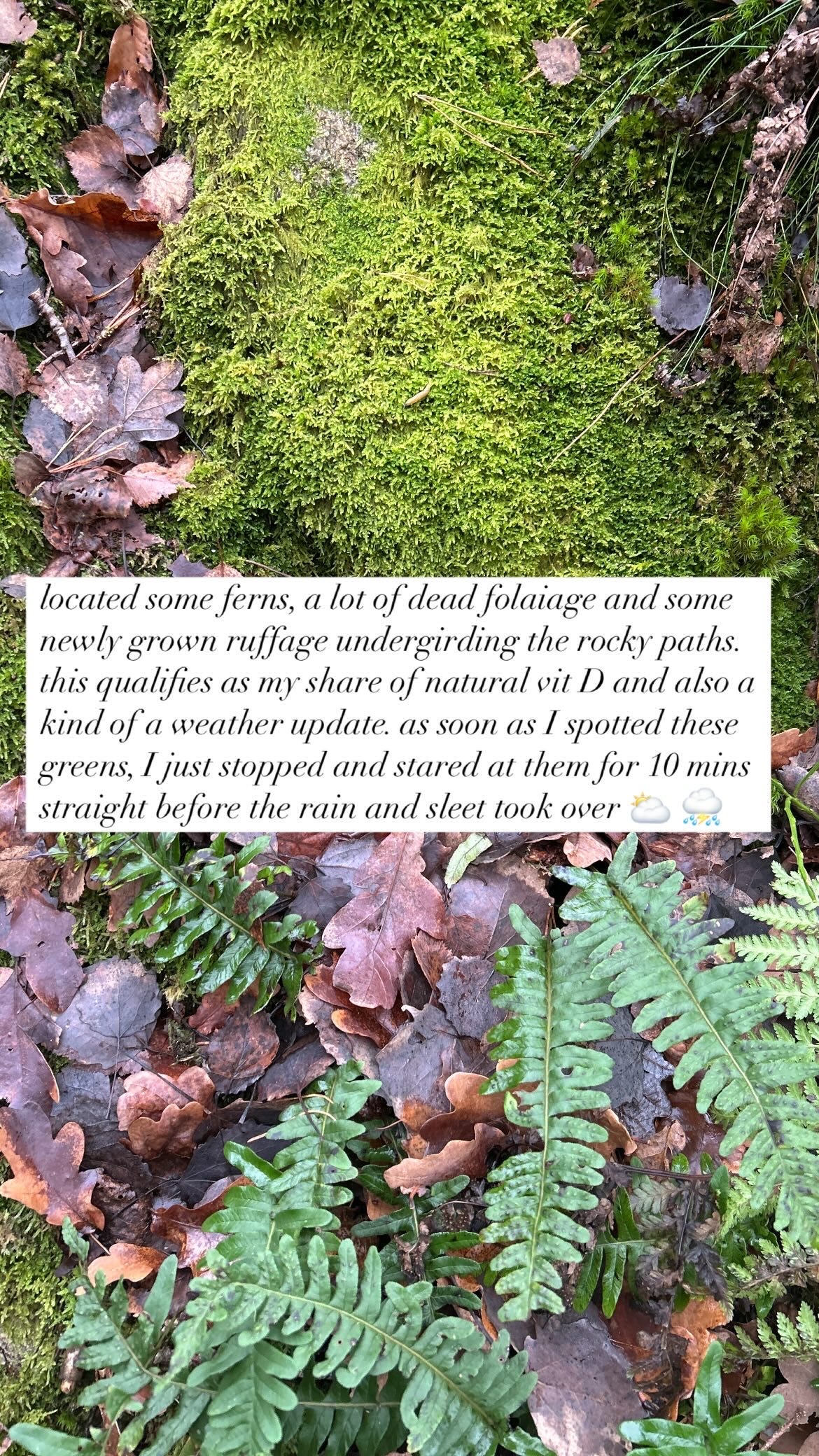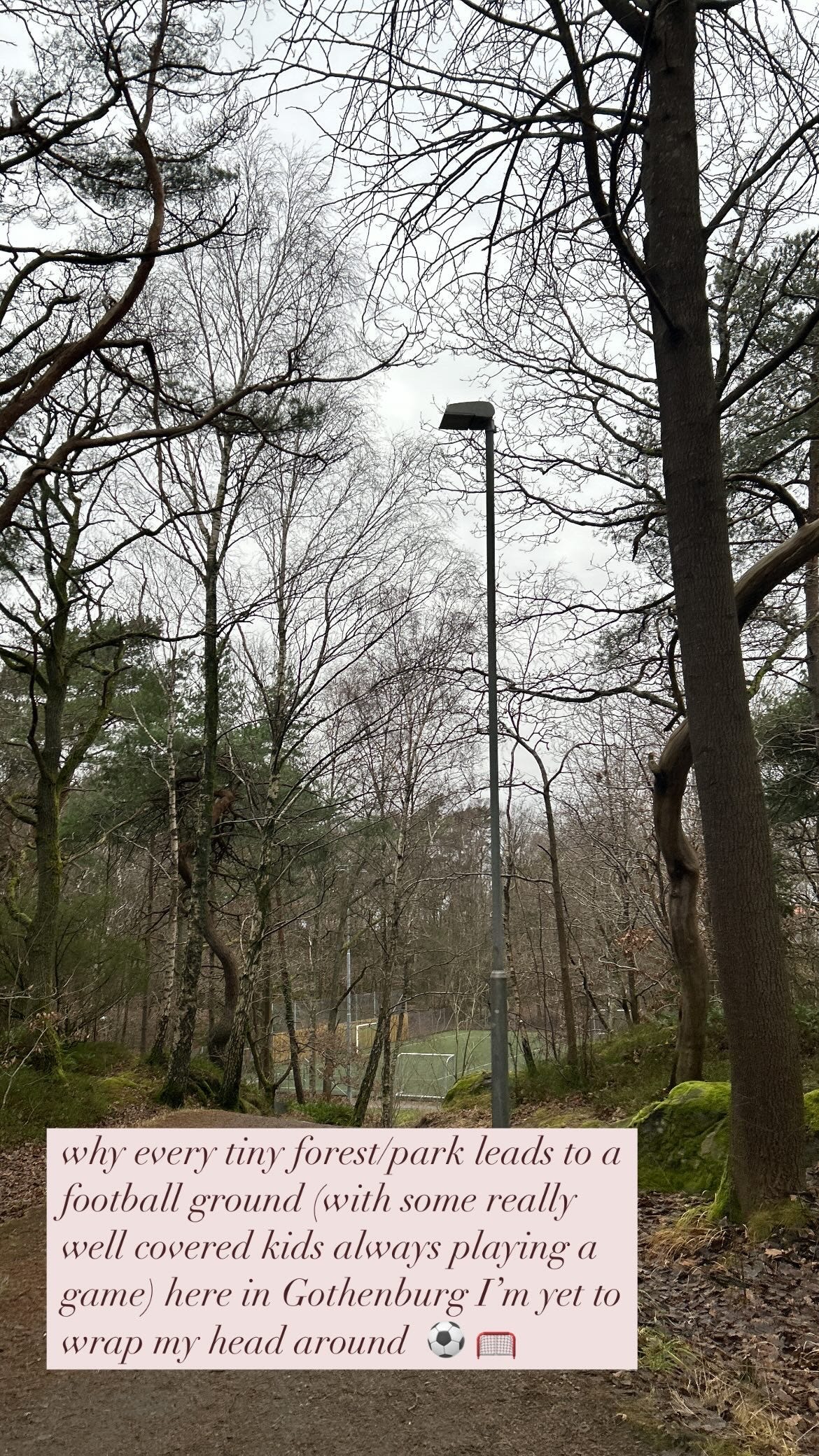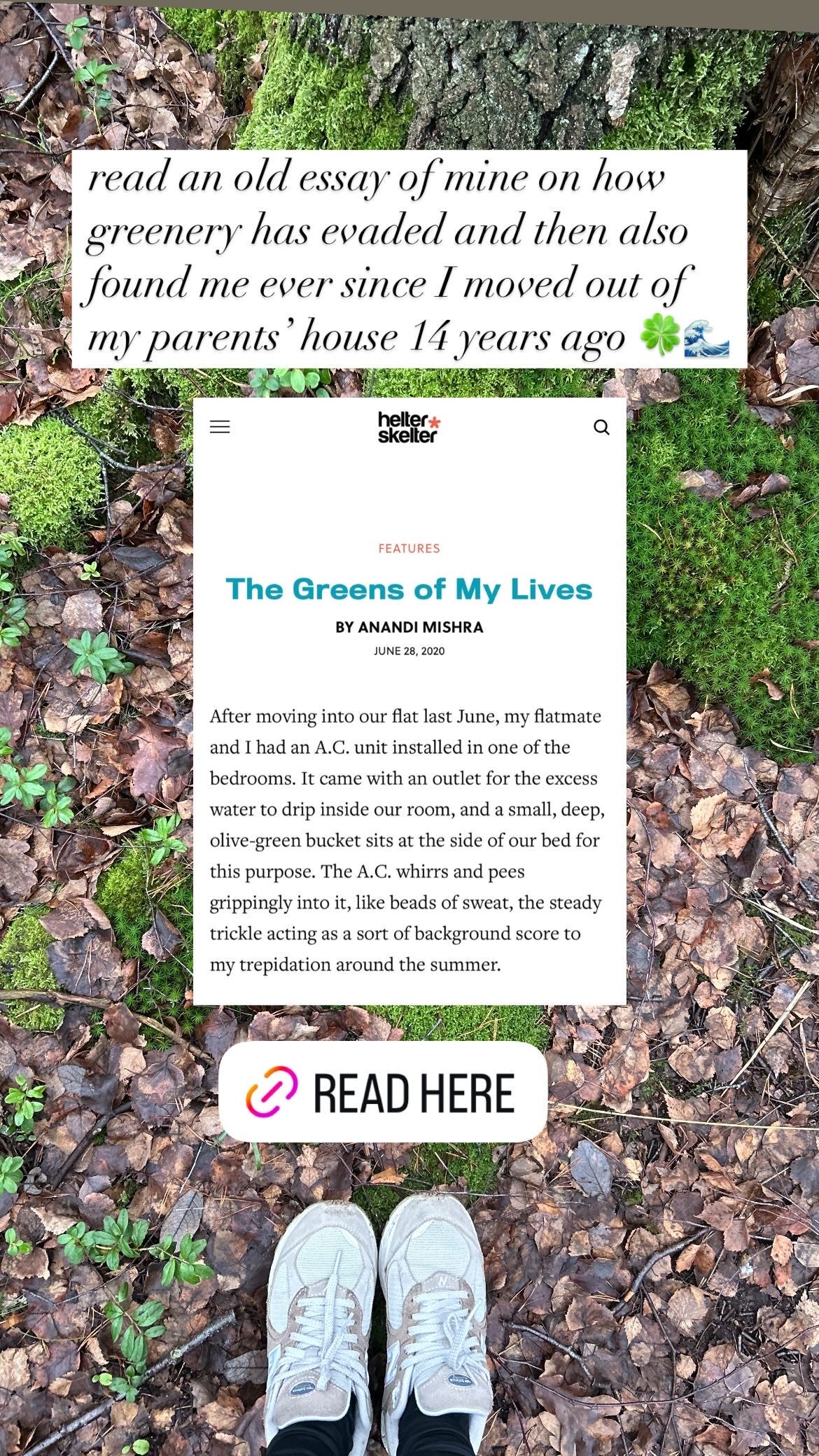To love is to linger
#Scurf220: On peri-urban walks, loneliness and the importance of yearning
This Linkedin post worked as a portal, a prompt of sorts, to write this essay.

All around me a pervasive aesthetic, an essence of decay, lingers. It’s a mourning for a world lost to warming, and our altered perception of it. This aesthetic comprises: a dissolving sense of self, the hubris of cities, and a detachment from surroundings, where individuals, even in crowds, remain isolated by their screens.
People’s devices glow blue in humid city alleys. A putrid air hangs heavy above us all, a burden of ignored climate change. A stranger’s phone plays a nostalgic tune that pulls you into a fleeting, tragic romance with a lost past. The smoke billows along, the smoke, no longer from yearning cigarettes, is now noxious, a shared, polluted haze.
On my walks and runs, these sights evoke a Hollywood glamour, a dystopia where no one speaks with another. You are in the same bus, but everyone’s living in their own separate reality. You drop your airpods on the crowded floor, but none of your co-passengers notice, no one to bear witness. Shame-facedly you leap at it, wipe off the dust, and put it back inside, not realising that one of the airpods is lurking behind the seat’s hind leg. Hidden far off from your eyes. A shared glance, a word, is lost to screens and self-absorption.
You walk along, with a never ending streak of grittiness, and the feeling of being adrift. This scene encodes a universal, modern feeling of being lost amid crowds, being lonely despite being with people. This ambivalence, this solitude, this isolation breaks my heart a little each time I go out. I’ve given up socials for over four months now, and where I had thought I’d feel free like a bird, looking at my fellow travelers in this journey of life, I feel as if I am caged and these people are all free. A primordial sense of loss lingers. But what is being lost? What is missed? What is feared?
Quitting these platforms, and generally using slower modes of communication has meant entering a world of heightened emotions. I’m no longer constantly consuming utterly forgettable, completely avoidable digital catalogues of people’s presents. Instead, I often set out on a day with a single thought and travel with it through the expanses of my minutes and hours, watching life pass me by, with just that one or sometimes two thoughts.
I feel a sense of tantalization in this form of existing — so inward and yet outward. It could be ill-fated, I’m definitely missing out on so many amusing reels and enrapturing visages, but against the sight of the woodpecker hard at work on the birch tree outside my window, I’ve mapped an entire winter season in its bare, now naked branches and trunk.
I go through my day like someone from the 1970s, not taking any pictures for weeks on end, and then filling up the roll with bountiful images of the cats that visit me. I speak with three, maybe four, people on a regular basis. Not everyone knows about my days and nights, and the tiny idle moments I find between this and that. Updates from friends are about milestones like a sister’s marriage or a final job offer. My own dreams have shifted, or rather, they’ve come back to their former, usual selves.
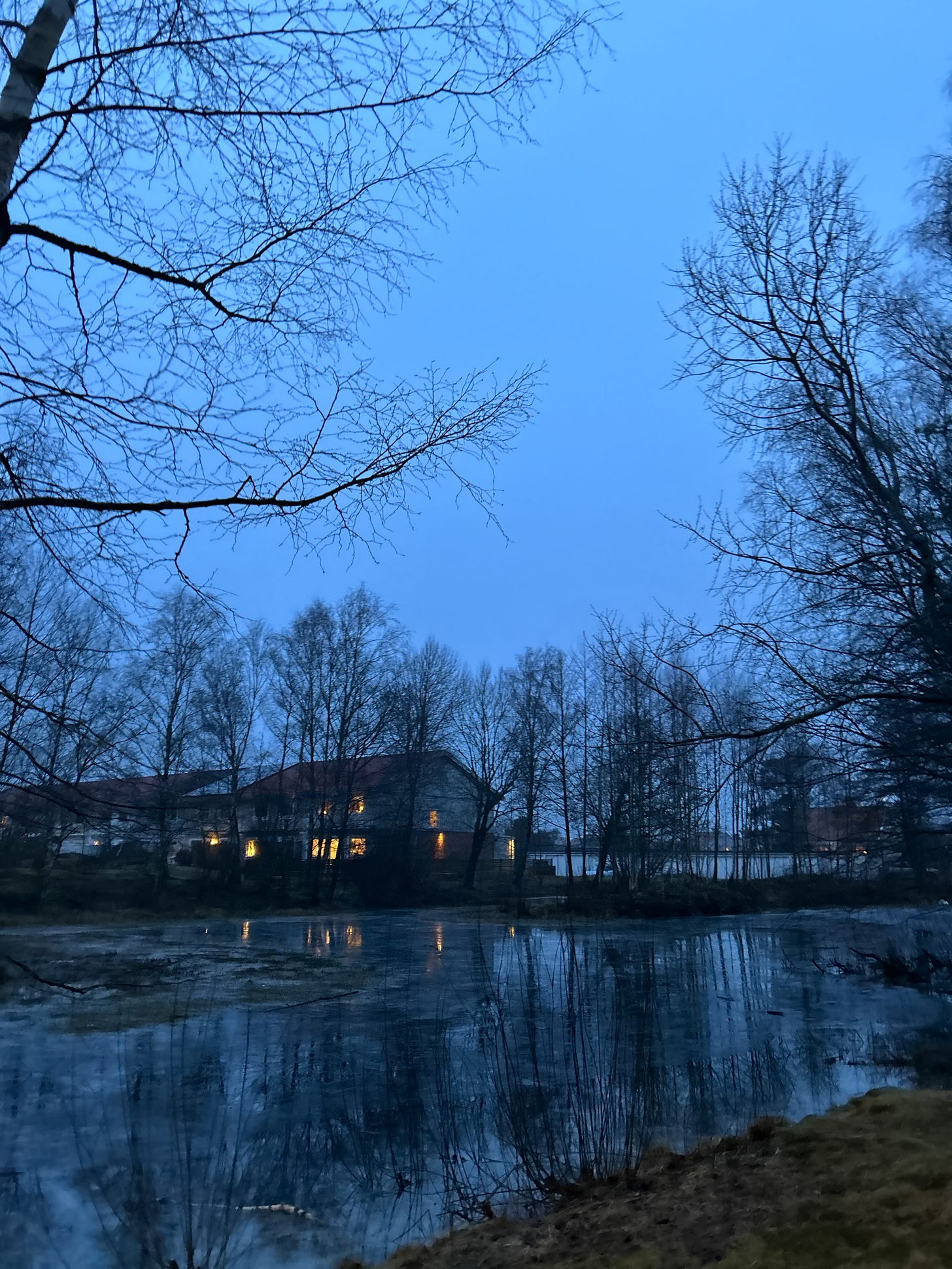
Perhaps I’ve become a bit twitchy when others use screens around me, but I generally read for longer, sit idle without tinkering with anything digital for stretches I’d forgotten. And, in a way, I’ve also restored the dreamlike texture to my wakeful life. So much so, that I’ve been able to find a vividness in colors even in the stark winter landscape of Sweden. The evocative palette woven around me like a potent spell, often leaves me completely hypnotized.
In these four (or more) Scandinavian winter months, I (naturally) forgot about the bright greens and vibrant blooms of the summer before. Instead, I found a meditative calm in the muted, rich colors of these cold days. By the end of January, the winter did start wearing itself heavy and dark on me, but I went for walks through landscapes that were richly urban, natural and also sometimes suburban, peri-urban. Through these walks, nature offered a calming center of attention where I found nourishment, enrichment and also my own primal form of amusement.
In forests and parks, the deep greens of evergreens, the frozen blues of ponds, the languid rust of metal and atrophied wood benches, all warred with the delicate silvers and greys of frost-touched branches. Wild mallards, their plumage a green and brown mosaic, moved like small, feathered secrets. Berries, heavy and pregnant on holly bushes, rosehips, jeweled avatars, punctuated the bleached, barren, blanched landscape. And the lichens! Those silent poets, their hues—bright green to olive grey, grey-green to dry brown—mocked my clumsy wordly attempts. I found them, those strange, symbiotic creatures, part fungus, part alga, unfurling their quiet stories like living organisms.
In the pale, stark Nordic winter, the earth, improbably, revealed a quiet, ferocious beauty. Small shrubs pushed through, perennial lichens shone—a defiant metaphor for resilience, a stubborn hope in these unraveling times. Snow, when it fell, draped the landscape in an otherworldly silence, yet even in the sleet and slush, the insistent newness, the fragile blossom, erupted. A stillness, a profound quieting, settled over me, a peace I had forgotten existed. Perhaps this is what my mother finds in her hours-long meditations, her days-long pilgrimages, a communion with the earth’s patient, unyielding heart.
On these walks, these solitary journeys, isolation became a familiar companion, a phantom limb. Yet, a persistent nostalgia, a yearning for an un-named, un-lived era, haunted the edges of my perception. An unrealized reality, a ghost-dance of the sidewalk, unfolded in its unsheltered, stark glory. To savor these details, un-pointed, un-explained, was to discover the music in the mundane. A silience settled, a quiet knowing, a revelation that in the everyday, the winter-worn landscape, lay a hidden, brilliant artistry, a whispered conspiracy of beauty.
Again, through the sheer act of repetition, like the laundry running in circles inside the machine, these walks turned depictions of repetitive life into dances of poetry. The city has been a repeating character in my life, often working as a subconscious guiding voice that sets me into motion. While on these walks or runs, or just sitting at the dinner table and listening to the reverie of the woodpecker, the city would often take a backseat. In those moments, I realised I became one of those large masses of people attempting to carve a place for myself in the quietude of this non-place. This third place given to me by nature became my sanctuary, a censorial escape from the urban chaos I had grown too used to. This was life and time, and by extension, me, as I had never experienced before; a slow, deliberate unfurling, a quiet revolution against the city’s relentless clamor.
The word sonder comes to mind: From the relentless spotlight of the self, the insistent thrum of everyone's story, to a sudden, startling anonymity. A retreat into the opulent, yielding hues of the natural world. I was adrift in a time before my own, a de-centering in a world perpetually demanding attention. Fran Lebowitz, that astute observer of urban disquiet, spoke of fleeing small towns, of escaping the intrusive gaze of neighbors. Anonymity, she suggested, was a forgotten luxury. Yet, here I was, a nameless creature in the urban wilderness, tracing paths laid down by trees that had stood for centuries. A hesitant reverence, a fear of disturbing the delicate balance, held me back. But I reached out...
To end this photo-essay reverie, here’s a quote from one of my beloved writers:
On the other side, behind the house in which I am sitting, there is a large farm building made of red brick, it is beautiful to look at, towering up amid the green foliage. Red and green. They mean nothing to you, but to me those two colours contain so much, something within them exerts a powerful pull, and I think this is one of the reasons why I have become a writer, for I feel that pull so strongly, and I know that it’s important, but I lack the words to express it, and therefore I don’t know what it is. I have tried, and I have capitulated. My capitulation is the books I have published.
— What Makes Life Worth Living? Karl Ove Knausgaard
Here’s an old essay of mine on topics similar and more: The Greens of My Lives

